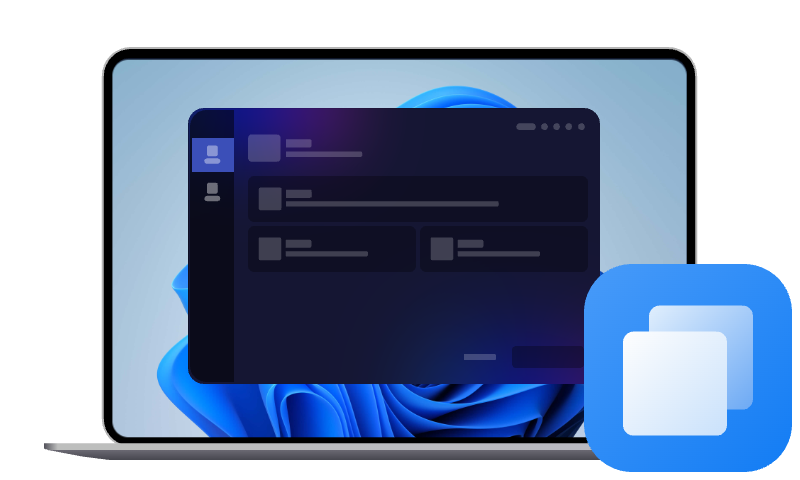Robocopy Clone Hard Drive to Another | File or Disk Copy Level
Robocopy clone drive helps copy all files and folders from one hard drive to another one, try it if that’s what you want. To clone the disk, consider using dedicated cloning software.
Overview of Robocopy Command Line
Robocopy (Robust File Copy) is a Windows command-line utility that provides advanced file and folder copying capabilities, significantly more powerful than traditional xcopy or copy commands. Introduced as part of the Windows NT 4.0 Resource Kit, it became a built-in utility starting with Windows Vista and Server 2008.
Designed for robust, high-volume replication, Robocopy excels in:
- Mirror files, folders, and subdirectories.
- Incremental backups - copy only new or changed files
- NTFS metadata handling, including timestamps, security descriptors, owners and audit info, NTFS ACLs, and permission.
- Multi-threaded copying, up to 128 threads, is great for large datasets and many small files.
- Resume interrupted transfers, especially for locked files.
- Network throttling & retries.
- ⛔Note: Robocopy clone disk won’t copy partition tables, MBRs, or hidden sectors — only files/folders. So there is no bootable clone like a dedicated cloning software, and some files are locked, even with /B.
How to Use Robocopy to Clone Drive (File Level Copying)
As mentioned earlier, Robocopy is for file or folder-level copying, not disk structure copying. If that’s what you want, try Robocopy command line to clone disk.
Option 1: Robocopy /s /b /z /xo /xj /V /R:0 /W:0 /copy:DT C:\srcD:\dst
This command uses /copy:DT to copy only new or changed files that offer better performance and simplicity than /COPYALL. With it, you’re doing a fast incremental backup of user data (not system files), avoiding duplication loops from junction points or symbol links with /XJ, and NTFS permission issues by skipping owners and security info with /B.
Step 1. Type CMD in the search box and select Run as administrator.
Step 2. Now, copy the Robocopy command into CMD and press Enter to execute. Please replace the source and destination drive paths.
- ✍️Notes:
- /S skips empty folders. Use /E if you want to include empty folders.
- Use /COPY:DATS or /COPYALLIf you care about security metadata, such as NTFS permissions or ownership.
- Backup mode(/B)requires admin and must be run in an elevated command prompt.
Option 2: Robocopy C:\src D:\dst /E /COPYALL
This command uses /COPYALL to copy all NTFS ACLs, subfolders, file owners, and all file attributes from one drive to another. The /E copies the empty folders and subfolders. You can open a Command Prompt window (with admin) and copy the Robocopy command line to execute.
Option 3: Robocopy C:\src D:\dst /MOVE
This command uses /MOVE to move all files from the source drive to the destination drive and delete files in the source drive. If you are not sure, try /MIR for syncing or /E for backup, then manually delete source files. Copy the Robocopy command line in a Command Prompt window (with admin) to execute.
💡Pro Tips:
- Use /E if you want to include empty folders, not just those with content.
- Always include /XJ when copying user folders to avoid junction point loops.
- Log everything: /LOG:robocopy.log /TEE for console + file logging.
- Prefer /COPY:DAT for general use; /COPYALL for exact NTFS replication or security auditing.
- Test with /L to simulate a run before executing large operations.
- Be cautious with /SEC and /COPY:S on non-NTFS drives.
Easier Alternative to Bootable Clone Entire Drive
Robocopy can't clone drives, only files or folders, and you can only make the drive bootable by reinstalling Windows, time-consuming and cumbersome, which of course you don't want (if at all possible).
Then, how? Use a dedicated hard drive and SSD cloning software like AOMEI Cloner clone the entire hard disk in Windows 7, 8, 10, 11, and servers, including the operating system, system files, EFI or system reserved partition, installed programs, and all data.

- Bootable clone - clone HDDs/SSDs and MBR/GPT system disks without boot issues (even if smaller). OS-only cloning is supported.
- Intelligent clone (default) - only clones the used sectors of a drive, making it easier to clone large HDD to smaller SSD. It will skip the bad sectors as well.
- Edit partitions - resize partition size on the destination disk, especially those with different disk partition styles (one MBR, one GPT).
- SSD alignment - align SSDs with 4k technology to improve disk performance and lifespan.
- Disk compatibility - compatible with trusted brands such as Samsung, WD, SanDisk, Crucial, etc., with different interfaces.
Step 1. Open AOMEI Cloner after installing, and click Clone > Disk Clone subsequently.
Step 2. You will be asked to select the source disk and destination disk (all data will be overwritten). Please be careful and click Next after each selection.
Step 3 (Important). Be sure to check the SSD Alignment feature to align SSD for better performance (if it is). Try the Edit Partitions feature for smooth cloning in the following two situations. At last, click Start Clone to get started.
- The target drive is larger. Select "Add unused space to all partitions or "Manually adjust partition size. The former is recommended as it is adjusted automatically without human intervention and minimizes errors.
- Both drives have different partition styles (one MBR, one GPT). Check the option "Convert the destination disk from MBR to GPT or vice versa to make them identical.
By default, this software will enable the intelligent clone feature to clone only the used sectors of a drive, saving time and effort. You can swap both drives to test if it’s bootable after cloning.
Closing Words
Robocopy clone drive is for file or folder-level copying, not disk structure. Try it if you want to copy only new or changed files, or transfer files from one drive to another. If not, use dedicated cloning software like AOMEI Cloner to clone the entire disk, including all OS-related files, and make the cloned drive bootable

